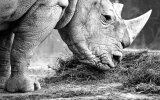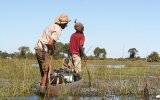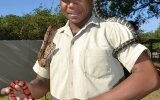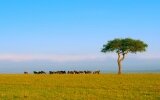- Magazine
- #readityourway
- Weekly Stories
- #shareyourstory
-
Adventure
- Abroad Travelling
- Africa Travelling
- Events
- Expos & Shows
- Festivals
- Fishing
- Free Diving
- Gliding
- Horse Riding
- Inspiring People
- Islands Travelling
- Kite/Windsurfing
- Motorbiking
- Motorised Water Sports
- Mountaineering
- Mountain Biking
- Off-road 4x4
- Off-road Motorbiking
- Paddling
- Performance Driving
- Photography
- Rock Climbing
- Rollerblading
- Sailing
- Scuba Diving
- Skateboarding
- Skydiving
- Snowboarding & Skiing
- Surfing
- Swimming
- Trail Running
- Wakeboarding
- Waveski Surfing
-
Sport
- Adventure Racing
- Fishing
- Free Diving
- Gliding
- Health & Fitness
- Horse Riding
- Inspiring People
- Kite/Windsurfing
- MMA
- Motorbiking
- Mountain Biking
- Multi-sport
- Off-road 4x4
- Off-road Motorbiking
- Paddling
- Performance Driving
- Photography
- Road Cycling
- Road Running
- Rock Climbing
- Rollerblading
- Sailing
- Scuba Diving
- Skateboarding
- Skydiving
- Snowboarding & Skiing
- Surfing
- Swimming
- Rugby
- Trail Running
- Triathlon
- Wakeboarding
- Waveski Surfing
- Lifestyle
- Calendar
Emerging Explorer
Words: Steve Boyes | Photos: Herman Warnich, Cooked in Africa Films
Category:
Environment & Wildlife
Category:
Inspiring People
Steve Boyes, a South African born and bred conservation biologist based in-between Cape Town, Hogsback Village and the Okavango Delta, joins a roboticist, an astrobiologist, a glaciologist, a planetary geologist, an artist, and an entrepreneur as one of 17 visionary, young trailblazers from around the world who have been selected as this year’s National Geographic Emerging Explorers.
Along with Steve Boyes, the 2013 Emerging Explorers are conservation biologist Erika Cuéllar, anthropologist Jason De León, planetary geologist Bethany Ehlmann, archaeologist Sayed Gul Kalash, computer scientist and roboticist Chad Jenkins, wildlife filmmaker and photographer Sandesh Kadur, artist Raghava KK, humanitarian Lale Labuko, innovator and entrepreneur Tan Le, conservation biologist Andrea Marshall, science educator and astrobiologist Brendan Mullan, geophysicist and glaciologist Erin Pettit, computational geneticist Pardis Sabeti, engineer and conservation technologist Shah Selbe, data artist Jer Thorp and adventurer and conservationist Gregg Treinish.
National Geographic Emerging Explorers may be selected from virtually any field, from the Society’s traditional arenas of anthropology, archaeology, photography, space exploration, earth sciences, mountaineering, and cartography, to the worlds of technology, music, and filmmaking.
As National Geographic celebrates its 125th anniversary year and looks forward to embracing a new age of exploration, we look to our Emerging Explorers to be leaders in pushing the boundaries of discovery and innovation. They represent tomorrow’s Robert Ballards, Jacques Cousteaus and Jane Goodalls,” said Terry Garcia, National Geographic’s executive vice president for Mission Programmes.
South African conservation biologist Steve Boyes is scientific director of the Wild Bird Trust. With a passion for the wilderness and parrot conservation, he works to preserve and protect Botswana’s uniquely pristine Okavango Delta, to mitigate threats bringing parrot species to the brink of extinction throughout Africa and to plant thousands of trees in his forest restoration projects. A postdoctoral fellow at the Percy FitzPatrick Institute of African Ornithology, his research is on the critically endangered Cape parrot, with a focus on better understanding the dynamics that caused an outbreak of the deadly Psittacine Beak and Feather Disease in Cape parrots in the wild. His work has also resulted in a moratorium on the importation of African Grey parrots into South Africa. His most ambitious undertaking is planting the first million trees and mounting hundreds of nest boxes for Cape parrots in the forests they depend on.
Last year, in his quest to catapult the world’s largest inland delta to World Heritage Site status, Steve together with his brother Chris (a marine ecologist) and his wife Dr Kirsten Wimberger (PHD Zoology) embarked upon an unassisted crossing of over 200 km of the Okavango Delta in mokoros (dug outs). A crew from Cooked in Africa Films accompanied Steve to capture this treacherous journey, which is soon to become a six-part documentary series entitled “The Bush Boyes: Across the Okavango”. The documentary gives viewers a unique glimpse into the fauna, flora, and inhabitants that co-exist along the Delta. It also delivers important scientific data on the region's endemic wildlife - over 530 species of birds, including African fish eagle, crested crane, lilac-breasted roller, hammerkop, ostrich, and sacred ibis; including the endangered African wild dog, which represents one of the richest pack densities in Africa, all in a bid to shed light on one of Steve's missions: declaring the Okavango Delta a World Heritage Site and ultimately saving the world's largest inland delta from imminent destruction.
Interview with Dr. Steve Boyes
1) When did your passion for wilderness and parrot conservation begin?
As a child going to the Kruger National Park with my parents and seeing parrots out in the wild absolutely fascinated me. Growing up, you always saw pet parrots in cages, like a trapped pirate! So on seeing those beautiful wild birds, living freely and out in the open intrigued me from a young age and I wanted to know more. To this day, I have never owned a parrot or kept a parrot in a cage, but only study them in their natural habitat.
2) What made you decide to observe, study, and conserve various parrots?
After studying my Masters, I was offered to do a PhD on African parrots in the Okavango Delta, which I readily accepted. I spent six months getting to know the Meyer's parrot in the Delta, which captivated me and has since turned into my lifelong obsession. The Meyer's parrot is the most abundant and wide-spread parrot in Africa and I wanted to take its secrets and beauty and spread this knowledge across Africa.
3) When did your research begin?
In the year 2000.
4) What made you decide to do a crossing over 200 km of the Okavango Delta in mokoros with your wife and brother and have you ever done something like this before?
It’s probably 10 years in the making! Having lived in the Okavango Delta for five years and conducted my PhD there, I was reborn there as conservationist and researcher. From spending so much time and energy in such a unique wilderness, I have made lifelong commitments to protect and conserve the water system and the wilderness, with my goal being to have the Okavango Delta declared a World Heritage Site.
5) When is the six-part documentary due to be released locally and or internationally?
Next year, we don’t have exact dates at this stage, but definitely during 2014.
6) What are you planning to do in the future?
Much more of what we’ve done already and to continue with our expeditions and research on parrots in Africa and the forests they depend on. We also plan to cross Africa’s five biggest deltas, the Bangweleu, Okavango, Zambezi, Sudd, and Niger Deltas, where our focus will be on water management, the water systems of the deltas, wildlife management, and the preservation of the wilderness across these deltas.
7) Tell us a little about your Okavango Delta journey?
• What were the biggest challenges during this journey?
The massive distance we had to pole was really tough, combined with the physical nature of what we were doing on a daily basis. Our feet and hands were in utter agony, but we needed to remain calm and focused as we were in Big 5 wilderness territory, where we were coming into contact frequently with hippos, elephants, and crocodiles. The challenge was to keep safe and vigilant, whilst feeling constantly exhausted.
• What were your favourite moments during this journey?
The moment the reeds opened in front of us to reveal the premier wilderness in Africa, the Okavango Delta. It took us eight days poling in our mokoros to get there, and the last day can only be described as purification by pain before entering the wilderness. These journeys across the Okavango in many ways are like a pilgrimage, one’s interaction with wildlife; the hippos, lions, and bird life, are truly special and must be protected.
• Did the trip meet your objectives?
Yes, I am proud to say it did.
8) What prompted the fantastic idea of working closely with local communities to plant and nurture seedlings, which you later buy back?
The local communities and villages are custodians of the forests and the wildlife. The trees in the forests don’t grow overnight, so the forest restoration we do is a multigenerational project. We rely on the local communities to be involved in and passionate about this initiative. We also have a huge amount to learn from the interactions of locals with these forests, as in the past when it was just them, the forests survived unharmed. The local communities live sustainable lifestyles that we would do well to emulate.
9) When do you plan to plant the million trees and where?
Our goal is to plant one million Yellowwood trees in the Amatola Mountain range, in the Eastern Cape, across degraded Yellowwood forest patches by 2023, so on average about we aim to plant 100,000 per year.
10) How do you plan to use your prize money?
I plan on using it to fund further research in the Okavango Delta.
11) When will you know if your plan to the Okavango Delta declared a World Heritage Site is successful?
We were hoping to find out by the middle of 2013, but due to discoveries of iron ore and prospecting of shale gas in the Okavango Delta, there have been delays.
12) How far are you into your research for a vaccine for the Psittacine Beak and Feather disease, and do you only find this disease in SA?
We discovered the disease in 2009, and by 2011 we had uncovered a 100% infection rate in the last 1,000 Cape parrots left in the whole world. We have identified the virus and found that it’s endemic to South Africa. Now we have learnt the genome of the virus, and are using it in our research to create a vaccine for the disease, which will hopefully help the longevity of the Cape parrot and decrease the imminent threat to their extinction.
13) Do you think we will be able to pull the Cape parrot back from the brink of extinction?
It’s a daunting prospect but yes, I think we will with investment from all South Africans. We must spread the message across our country and the world that we are planting our national tree, the Yellowwood, to save our national parrot, the Cape parrot. These birds have lost their wilderness and it is now our responsibility to take care of them by replanting their forests and actively addressing the extinction threats that face them. Our plan is to get those million trees in the ground so the birds can feed off them, ensuring they are looked after in the long term. We are also erecting nest boxes in the trees in which the parrots will live. It is a project in which not only local communities and villages but South African people and companies must be educated and invested. Through this project we run an initiative where for a donation of R1,000 you can sponsor 50 Yellowwood trees, which you can monitor as they grow. You can also donate R600, which covers the cost of the erection of a nest box.
14) Who are the biggest supporters of the wonderful work that you are doing?
That’s a big issue for me at the moment because our national heritage is currently being taken care of by international grant agencies, such as Conservation International and National Geographic, with sadly no support from local companies or corporate groups. We do receive some private charitable donations from individual South Africans, which are great, but we need investment from South African corporations to really make a long-term difference. We are excited about a recent partnership with Olivetti where one Yellowwood tree will be planted for every Olivetti machine sold. The effect is that the oxygen produced by one tree will offset the carbon emission created when making the machine. So it is a long-term process that will require constant maintenance to ensure that the trees grow and stay healthy, for which financial support is essential.
|
|
|
|
|
|
|
|
|
|
|
|







